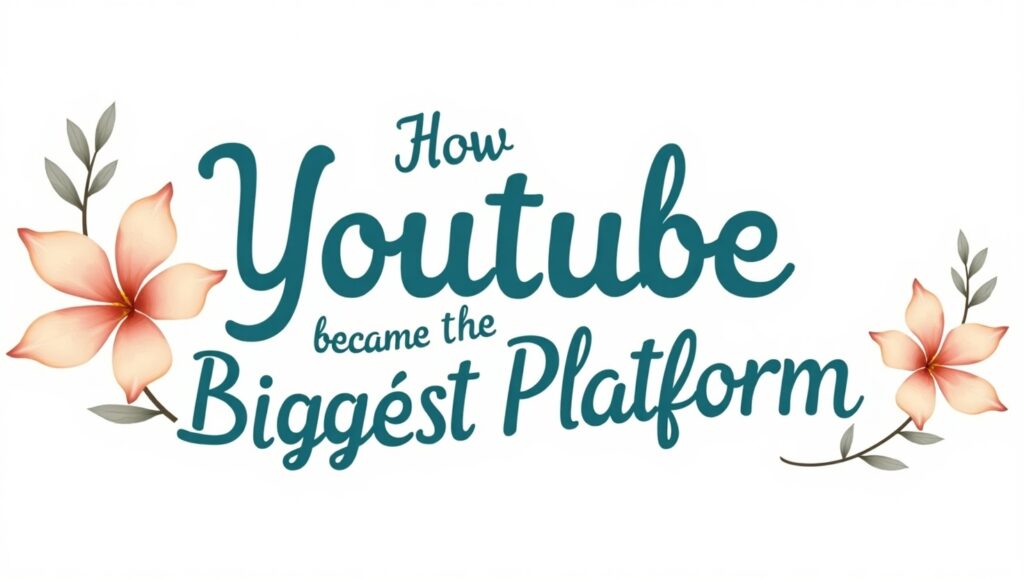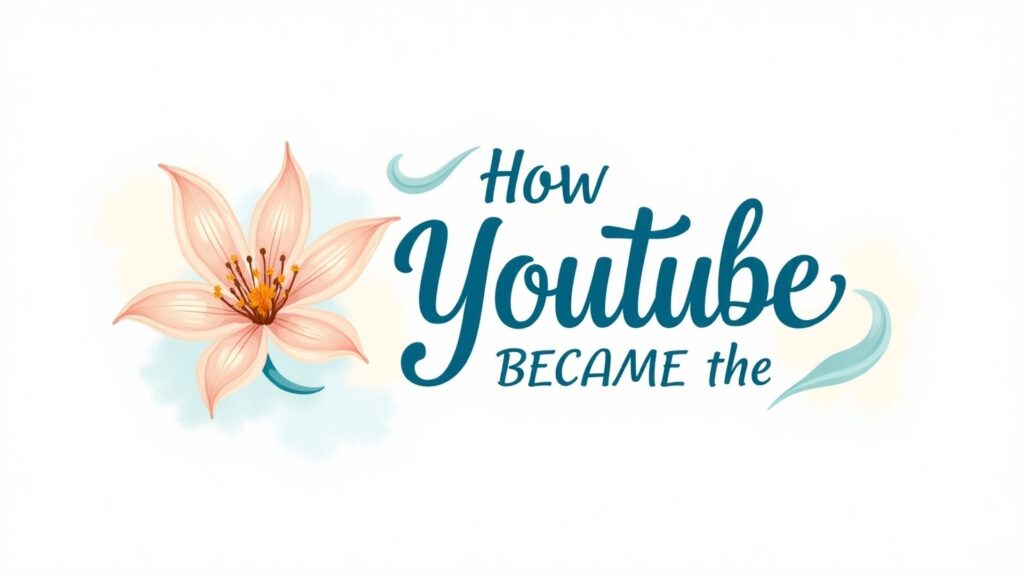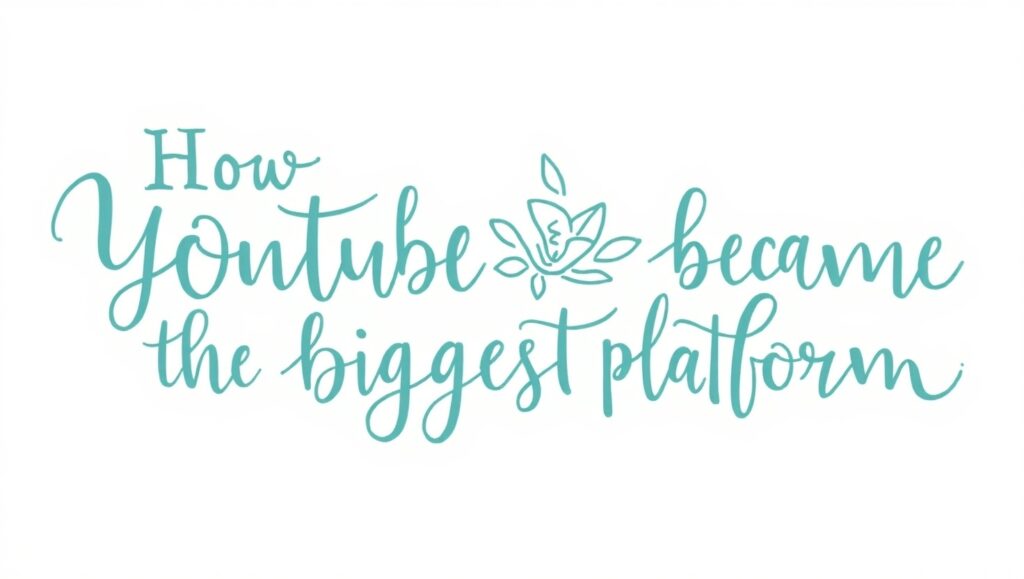In the age of the internet, no site has transformed content creation and consumption quite like YouTube. Launched in 2005, YouTube developed from a simple video-sharing site into the largest video platform in the world, having over 2.7 billion monthly active users. Today, it influences entertainment, education, marketing, and even politics. But how did it get here?
This article analyzes the journey of YouTube, the reasons behind its immense success, and how it became the biggest platform on the planet.

The Birth of YouTube: A Simple Idea That Changed Everything
YouTube was created in February 2005 by Steve Chen, Chad Hurley, and Jawed Karim, former PayPal employees. The idea was simple yet revolutionary – to build a platform where anyone could quickly upload and exchange videos online. The first video ever uploaded, titled “Me at the Zoo”, signalled the beginning of a new era.
Just a year later, in November 2006, Google acquired YouTube for $1.65 billion, a choice that proved to be one of the best investments in tech history. Backed by Google’s infrastructure and resources, YouTube was ready to scale globally.
Why YouTube Grew So Fast 1. User-Generated Content Revolution
Unlike traditional media, YouTube handed power to average consumers. Anyone with a camera and internet connection might become a creator. This opened the door for varied voices, ideas, and perspectives – something mainstream media frequently lacked.
Free and Accessible
YouTube has always been free to use, lowering obstacles for both artists and viewers. Its mobile-friendly design and availability in over 100 countries and 80 languages makes it accessible to a global audience.- Monetization using the YouTube Partner Program
In 2007, YouTube established the Partner Program, allowing producers to make money through commercials. This turned YouTube into more than a hobby — it became a career route. The growth of YouTubers and influencers generated a new digital economy

Search and Recommendation Algorithms
YouTube’s clever algorithm, backed by Google, selects content based on user activity. This personalization keeps viewers interested and coming back for more. YouTube swiftly became the second-largest search engine after Google itself. Diverse Content for Everyone
From lessons and vlogs to documentaries and live streaming, YouTube caters to every interest imaginable. This variety made it a one-stop platform for: Entertainment: Music videos, humour, online shows, and viral challenges. Education: Free courses, how-to guides, and expert interviews. News and Information: Independent journalism, live updates, and political conversations. Gaming: Let’s Plays, walkthroughs, and live streaming on YouTube Gaming. This diversity keeps the platform relevant and interesting across all demographics
. Impact on Society and Culture
YouTube has changed modern culture. It has given rise to online celebrities, redefined celebrity, and transformed how people consume content. From PewDiePie to MrBeast, creators with millions of subscribers increasingly match established celebrities in popularity and reach. It has also become a vehicle for social change, allowing activists to communicate their messages and document real-world events. During worldwide movements and crises, YouTube has served as a digital public square for awareness and action. YouTube and the Creator Economy
The platform’s impact on the creator economy is significant. In 2023 alone, YouTube paid out nearly $30 billion to creators through ad revenue, sponsorships, memberships, and merchandise integration. This income model supports millions of full-time and part-time content creators worldwide. Features like Super Chat, YouTube Shorts, Community Posts, and YouTube Premium have further expanded monetization alternatives. As a result, creators no longer depend solely on ads to generate cash. Adapting to Trends and Innovation
YouTube’s success is partly connected to its ability to evolve. The platform has regularly upgraded itself to fulfill user needs: YouTube Shorts to compete with TikTok in short-form content. YouTube Live for real-time streaming and engagement. VR and 360-degree videos for immersive experiences. AI-powered subtitles and translations for global accessibility. This ability to stay ahead of trends has kept YouTube relevant and competitive in a fast-paced digital world.

YouTube’s Role in Business and Marketing
For brands and marketers, YouTube is an essential platform. With billions of daily views, it offers unmatched reach and targeting options. Businesses use it for: Product demos and reviews Influencer marketing Ads and brand storytelling Educational content and webinars YouTube’s SEO power, combined with Google search integration, also boosts visibility and traffic, making it a must-have channel in any digital marketing strategy. Conclusion: Why YouTube Is the Biggest Platform Today
YouTube didn’t become the biggest platform overnight. Its journey was driven by innovation, accessibility, user empowerment, and the ability to adapt. It’s more than just a video site — it’s a cultural phenomenon, a career engine, and a global stage for expression. From hobbyists to businesses, from students to educators, everyone has found a place on YouTube. As the digital landscape continues to grow, YouTube remains at the forefront, proving that video is not just content — it’s the futureYouTube success story, biggest video platform, YouTube algorithm, YouTube creator economy, rise of YouTubers, most used platform, why YouTube is successful,



